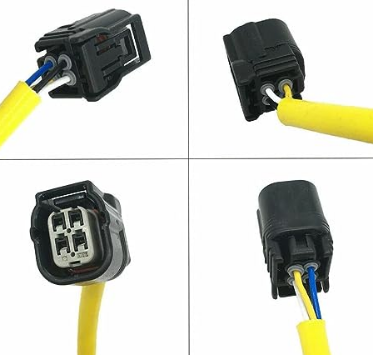Your cart is currently empty!
How to determine whether 36531-5K8-004 downstream oxygen sensor is working properly?
The downstream oxygen sensor 36531-5K8-004 is a critical component in the emission control system of your vehicle. As part of the exhaust system, it monitors the oxygen content in the exhaust gases after they have passed through the catalytic converter. Ensuring that this sensor is working properly is crucial for maintaining optimal engine performance and fuel efficiency. In this article, we will discuss how to determine whether the 36531-5K8-004 downstream oxygen sensor is functioning as it should.

Understanding the Role of the 36531-5K8-004 downstream oxygen sensor
The 36531-5K8-004 downstream oxygen sensor is responsible for measuring the oxygen levels in the exhaust gases after they have been treated by the catalytic converter. This data is relayed to the engine control unit (ECU), which uses it to adjust the air-fuel mixture for efficient combustion. By ensuring that the right amount of oxygen is present, the sensor helps minimize harmful emissions and improve fuel consumption efficiency.
Signs of a Malfunctioning 36531-5K8-004 downstream oxygen sensor
Detecting signs of a malfunctioning downstream oxygen sensor is crucial for timely replacement and to prevent potential engine issues. Some common indicators include:
Check Engine Light: A malfunctioning sensor can trigger the check engine light on your vehicle's dashboard. If this light illuminates, it's essential to have your vehicle diagnosed by a qualified mechanic to identify the specific issue.
Decreased Fuel Efficiency: A faulty 36531-5K8-004 downstream oxygen sensor can lead to an imbalanced air-fuel mixture, resulting in decreased fuel efficiency. If you notice that your vehicle is consuming more fuel than usual, the sensor could be a potential culprit.
Rough Engine Idling: A malfunctioning sensor may cause rough idling or an unstable engine idle speed. This can also lead to a decrease in overall engine performance.
Performing a 36531-5K8-004 downstream oxygen sensor Test
To determine whether the 36531-5K8-004 downstream oxygen sensor is working properly, you can perform a simple test using an automotive diagnostic scanner or an OBD-II scanner:
Connect the Scanner: Plug the scanner into the vehicle's OBD-II port, which is usually located beneath the dashboard on the driver's side.
Read the Codes: Use the scanner to read any diagnostic trouble codes (DTCs) stored in the vehicle's ECU. A malfunctioning 36531-5K8-004 downstream oxygen sensor is likely to trigger specific codes related to the sensor or the emissions system.
Clear the Codes (optional): If you find any DTCs related to the downstream oxygen sensor and have replaced the sensor, you can clear the codes with the scanner. This will reset the check engine light.
Conclusion
Ensuring that the 36531-5K8-004 downstream oxygen sensor is working properly is essential for maintaining optimal engine performance and fuel efficiency. By being attentive to signs of malfunction and conducting a diagnostic test, you can detect any issues with the sensor early and take the necessary steps to rectify the situation. Regular maintenance and timely replacement of the downstream oxygen sensor will keep your vehicle running smoothly and efficiently for miles to come.






Leave a Reply